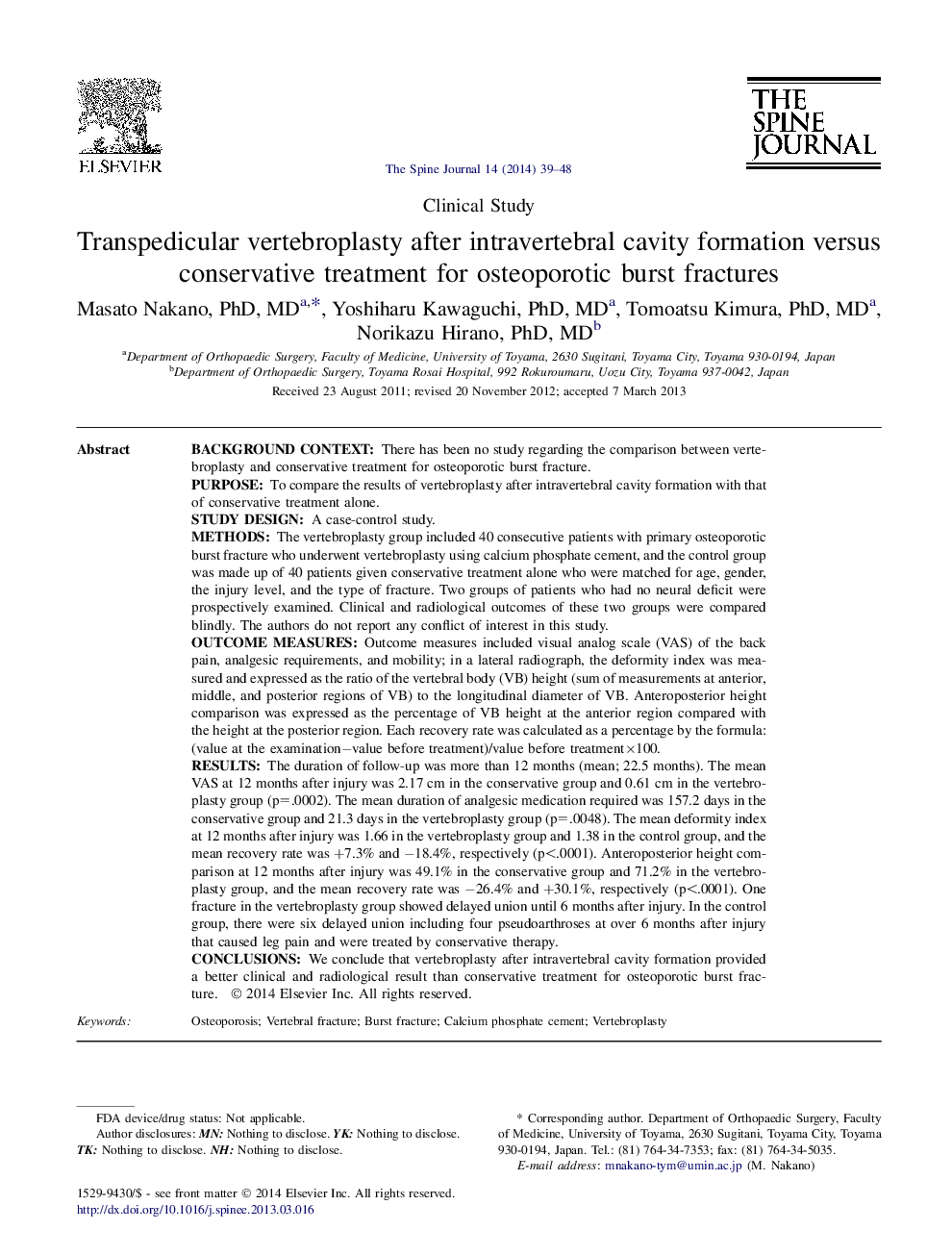| کد مقاله | کد نشریه | سال انتشار | مقاله انگلیسی | نسخه تمام متن |
|---|---|---|---|---|
| 6212597 | 1268584 | 2014 | 10 صفحه PDF | دانلود رایگان |

Background contextThere has been no study regarding the comparison between vertebroplasty and conservative treatment for osteoporotic burst fracture.PurposeTo compare the results of vertebroplasty after intravertebral cavity formation with that of conservative treatment alone.Study designA case-control study.MethodsThe vertebroplasty group included 40 consecutive patients with primary osteoporotic burst fracture who underwent vertebroplasty using calcium phosphate cement, and the control group was made up of 40 patients given conservative treatment alone who were matched for age, gender, the injury level, and the type of fracture. Two groups of patients who had no neural deficit were prospectively examined. Clinical and radiological outcomes of these two groups were compared blindly. The authors do not report any conflict of interest in this study.Outcome measuresOutcome measures included visual analog scale (VAS) of the back pain, analgesic requirements, and mobility; in a lateral radiograph, the deformity index was measured and expressed as the ratio of the vertebral body (VB) height (sum of measurements at anterior, middle, and posterior regions of VB) to the longitudinal diameter of VB. Anteroposterior height comparison was expressed as the percentage of VB height at the anterior region compared with the height at the posterior region. Each recovery rate was calculated as a percentage by the formula: (value at the examinationâvalue before treatment)/value before treatmentÃ100.ResultsThe duration of follow-up was more than 12 months (mean; 22.5 months). The mean VAS at 12 months after injury was 2.17 cm in the conservative group and 0.61 cm in the vertebroplasty group (p=.0002). The mean duration of analgesic medication required was 157.2 days in the conservative group and 21.3 days in the vertebroplasty group (p=.0048). The mean deformity index at 12 months after injury was 1.66 in the vertebroplasty group and 1.38 in the control group, and the mean recovery rate was +7.3% and â18.4%, respectively (p<.0001). Anteroposterior height comparison at 12 months after injury was 49.1% in the conservative group and 71.2% in the vertebroplasty group, and the mean recovery rate was â26.4% and +30.1%, respectively (p<.0001). One fracture in the vertebroplasty group showed delayed union until 6 months after injury. In the control group, there were six delayed union including four pseudoarthroses at over 6 months after injury that caused leg pain and were treated by conservative therapy.ConclusionsWe conclude that vertebroplasty after intravertebral cavity formation provided a better clinical and radiological result than conservative treatment for osteoporotic burst fracture.
Journal: The Spine Journal - Volume 14, Issue 1, 1 January 2014, Pages 39-48